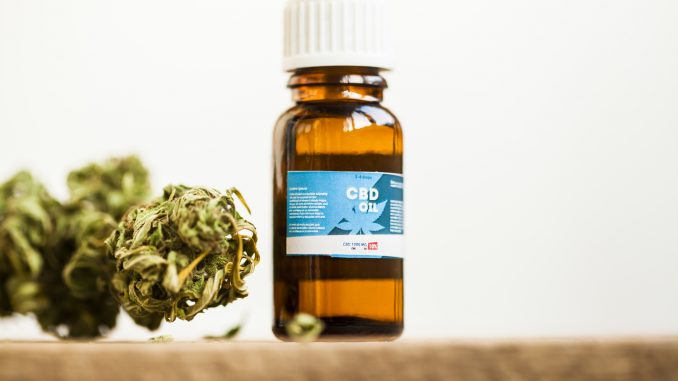
Part of the reason that cannabidiol (CBD) is so popular is because it can be consumed in so many ways, all of which have some unique advantages to get the most out of the cannabinoid.
CBD is non-psychoactive and doesn’t produce any intoxicating effects or a “high.” CBD helps with immune system and inflammation issues, is an effective pain reliever, can bring anxiety under control, clear up skin complaints and more. The changes CBD makes to the endocannabinoid system are usually at the root of any therapeutic effects.
High-CBD strains of cannabis are not often used for smoking, but to make extracts which can be used to make CBD products that are healthier to consume.
Here are six common ways to take CBD.
Vaping
Smoking CBD-rich cannabis may be injurious to health, but vaping does not subject the body to carcinogens, toxins, free radicals and tar. Vaping CBD e-liquid and vape oil is excellent for managing acute conditions, such as neuropathic pain and anxiety. While prescription drugs have to be consumed orally, with relief sometimes taking up to an hour, the therapeutic effects of CBD begin to take shape just seconds after the first hit when vaporizing.
Seasoned vapers love all the options available to modify and personalize their device for the ultimate experience. Furthermore, with a top-end vaporizer, you can set the temperature to one-degree intervals with the aim of activating certain cannabinoids – for example, hotter settings will activate more CBD, but perhaps burn off cannabinoids with lower boiling points. Through experimentation, vapers can work towards their perfect set-up.
The only downside to vaping is that it’s not always accepted in public, with some cities taking steps to apply the same restrictive legislation that smokers face in regard to vaping in public places. For those who do vape on the go, picking a vape oil without terpenes will help to keep the smell down.
Edibles
The market for CBD edibles has boomed over the past decade, with manufacturers cooking up several exciting options, such as CBD lollipops, CBD chocolate and CBD gummy bears. While edibles don’t offer the quick hit that e-liquids do, the gradual release of CBD into the bloodstream makes them effective for much longer. Acute pain patients may not find this overly beneficial, but for extended pain relief or a lengthier mental pick-up, this is a handy trait.
For beginners, getting the hang of CBD edibles may be tricky, as everyone metabolizes CBD at different speeds. For some, 30 minutes is all it takes, but others can be waiting as long as 90 minutes to feel anything. Taking edibles on an empty stomach can help to speed things up. However, resist the temptation to take another dose within two hours of your first, as this may compound the effects and make the body too sedated. This isn’t a long-term problem, but it may be slightly unsettling if unfamiliar with a large dose.
Sublingual tinctures
Most cannabis-based drugs are administered sublingually, because this method offers a quick way to get cannabinoids into the bloodstream without putting health at risk. This expands who can safely medicate with CBD – for instance, it wouldn’t be practical for a child with epilepsy to vape, but a dose of CBD via a tincture oil doesn’t expose developing organs to stresses.
Medicating with CBD oil couldn’t be easier. The label should explain how much CBD is present in each spray or full pipette, and that oil can then be applied under the tongue and held for a couple of minutes. Avoid swallowing the oil too quickly as this will make the effects more like an edible.
Concentrates
Sometimes e-liquids and edibles just don’t have the potency to effectively remedy a serious problem, such as chemotherapy pain and symptoms of nausea. This is where powerful concentrates pick up the slack. THC concentrates, like wax, are enjoyed by hardcore recreational users, but with CBD concentrates it’s all about the medical benefits.
Most CBD concentrates are made from CBD-isolate, although some companies have worked to increase the therapeutic potential of these products by adding certain terpenes to promote synergy.
Concentrates can be dabbed with a nail (or an electronic nail where it’s possible to set a precise temperature) and also combined with vape oils and e-juices for an extra kick. Not everybody will need the immense strength of concentrates, and for some it may even make for inefficient medicating, but for a select group of patients, these are mighty.
Capsules
For some people, choosing to use medical cannabis is a tough decision to make, given the decades of stigma, and perhaps moralistic viewpoints against using the herb in any form. Others just want an easy, discreet and hassle-free way of consuming CBD medication that doesn’t involve vaping or keeping oil under the tongue for minutes. In these situations, CBD capsules are a savvy choice.
CBD capsules come in a tub and do not have a recognizable odor – they are available in various potencies and the best brands use supercritical CO2 extraction to produce a high-quality CBD extract. Capsules are not great for rapid relief, as digestion of the capsule must occur before CBD is absorbed into the bloodstream, but these pills do work for many hours, treating ailments in all parts of the body.
Topicals
CBD topicals are unlike any other type of CBD product, and are primarily used to treat skin conditions. Researchers realized that CBD creams had a unique potential to help with notorious skin disorders, thanks to the expression of cannabinoid receptors – and especially the CB2 receptor which is linked to the immune system – in the skin.
Dry skin, oily skin and the proliferation of skin cells are three inflammatory issues that are common in skin complaints. By controlling how much sebum is made by the sebaceous glands, CBD ensures the skin is never too dry or too greasy. And by regulating the skin cell life cycle, the accumulation of plaque on the skin as skin cells are pushed to the surface is prevented.










